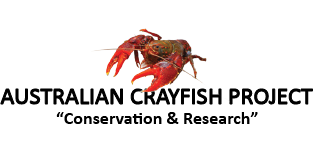During routine “Pure Research” as part of the Australian Crayfish Project we were attempting to map the distributions of known species in central western drainage of NSW. This involves opportunistic surveying of any available streams as we drive rural backroads attempting to head in a general direction.
You may think this is easy, but it’s not by any means. We have a general plan before we leave, mostly planned by google maps. When we are on the ground we are use our Hema GPS and Garmin GPS plus a number of other phone apps in the vehicle. Unfortunately, none of them are accurate, all our maps indicate the road continues but that’s not the fact. We will travel an hour up a back road but come to a locked gate, or the road ends, or it’s a private property, or a deep river crossing. We then need to back track an hour, travel 2 hours around to the other side of the road, survey it then head back to camp.
Most of western NSW is rural grazing properties and significantly habitat altered. This restricts our surveying efforts to the creek and river crossing on whichever road we end up on. Despite the difficulties, we persevere and have good results.
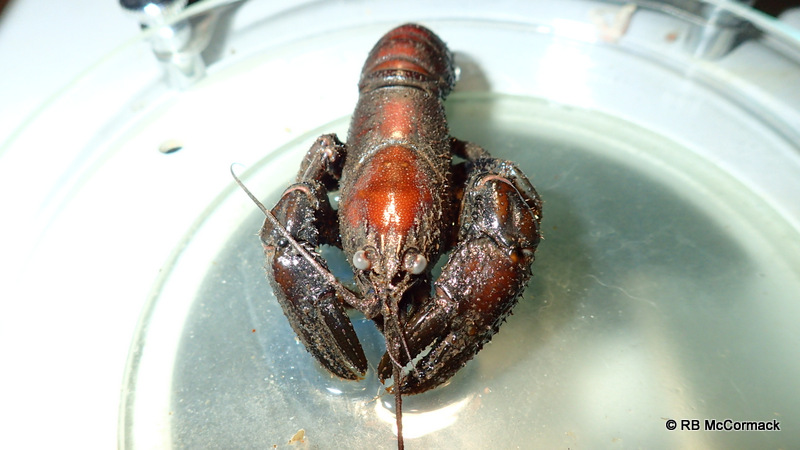
Surprisingly at a random creek crossing we found this animal. Now it does not like anything unusual or significant until you have a closer look. This crayfish has 4 mesial carpal spines which is very significant.

The majority of NSW crayfish with 4 mesial carpal spines are all restricted to the far north of the state in the rainforests. The species with 4 mesial carpal spines are Euastacus girurmalayn, Euastacus guruhgi, Euastacus jagaba, Euastacus maidae and Euastacus mirangudjin. All of these species are in eastern drainage.
Queensland has a mass of species with 4 spines but once you get below the NSW/Qld border area the species with 4 spines are restricted to just 2. In NSW in eastern drainage you have Euastacus reductus and in Victoria you have Euastacus diversus.
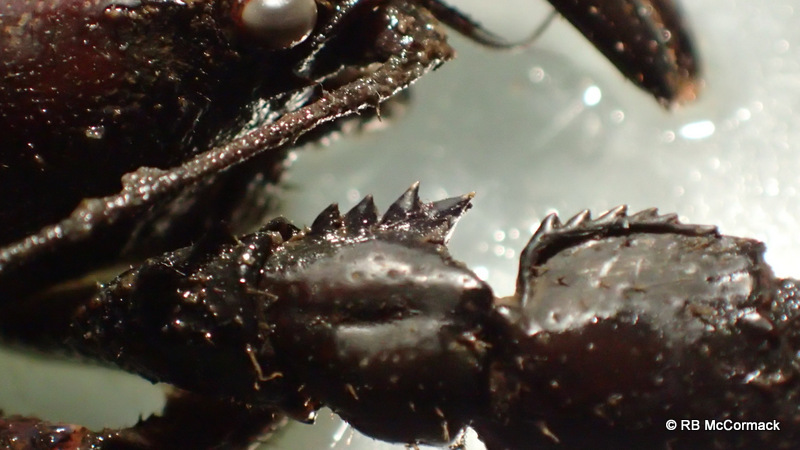
This new species represents the first species of Euastacus with 4 mesial carpal spines ever found in western drainage. Interestingly, the spines are in a relatively straight row, unlike the spines of the border range Euastacus. Among other things I’m researching Euastacus maidae from the upper Tweed and Currumbin Creek area . This is one I caught in early May 2019 (ACP6345), note the mesial carpal spines are not in a straight row, the first two spines are offset to the other two.
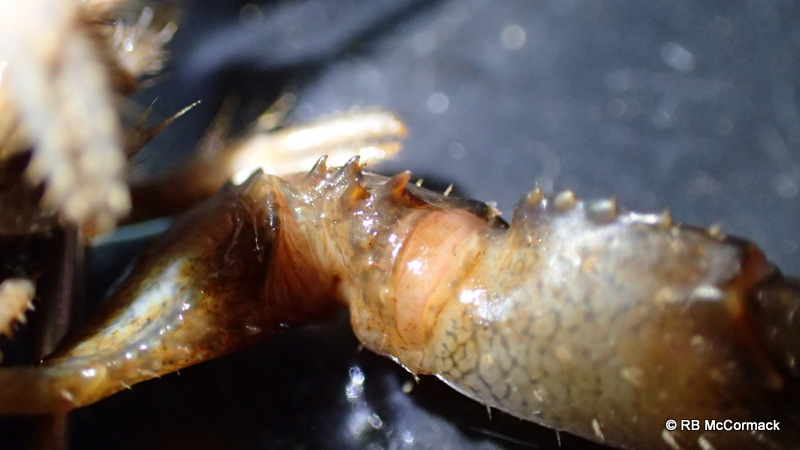
Its early days yet and we will now start a “Strategic Research Project” to describe this new species. This will be a slow process as Im just a volunteer doing all this research out of my own pocket with the help of some of you generous people that donate to the project. Every day in the field requires 2 days in the lab, processing specimens and writing up results and papers. Plus vehicle costs are astronomical with over 50,000 km/year travelled looking for crayfish. If anyone has some spare cash please contribute.
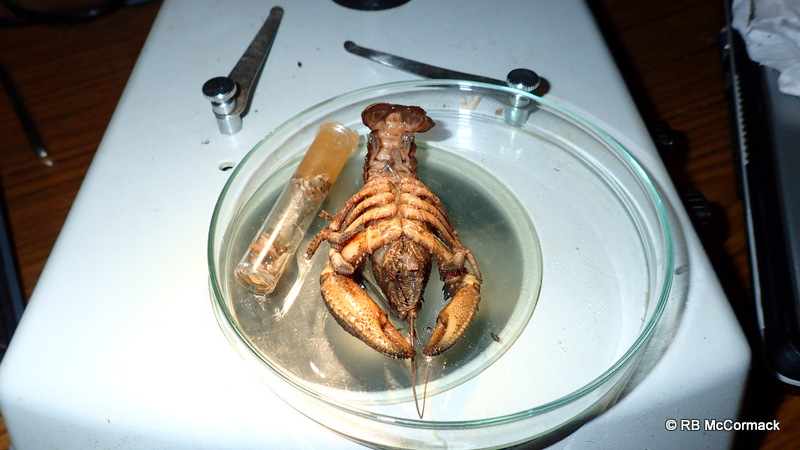
Describing a species is important, without a name and when no one knows that the species exists then any sort of conservation is impossible. Formal description of a species provides the information the management agencies need to help conserve the species and provides support to catchment and landcare groups that are concerned with riparian zone repair and stream health in which the crayfish species lives.
Cheers
Rob
